
|
|
|
| Home | News | Tourisme | Projets HAA | Projets DGP / Heavy-Freight | Projets Français | Présentation | Links | |
Les principaux projets de dirigeables "GROS PORTEUR" / Heavy Freight Airships.
News - le monde des dirigeables gros porteur.
Suivez l'avancée des projets
The world of Heavy Freight Airships
| HAA HIGH ALTITUDE AIRSHIP DIRIGEABLE HAUTE ALTITUDE | |||||||
|
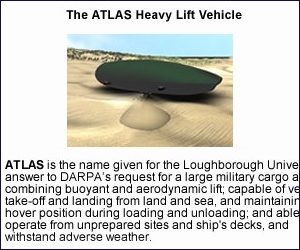 |
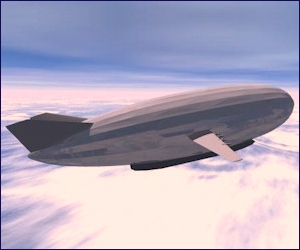 |
|||||
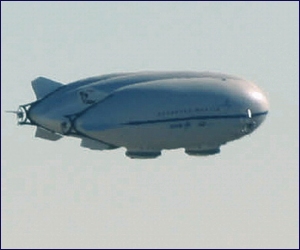 |
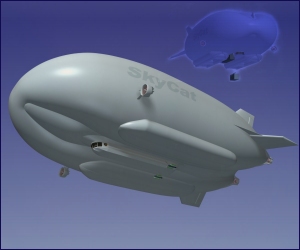 |
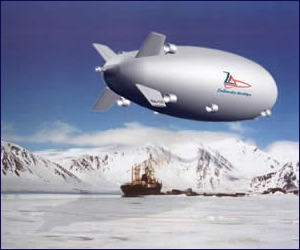 |
|||||
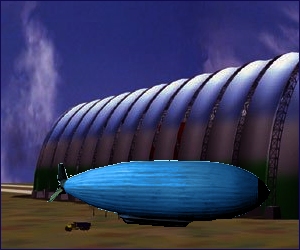 |
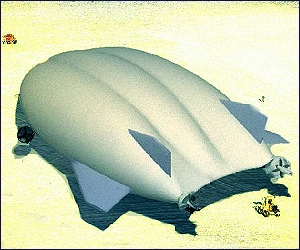 |
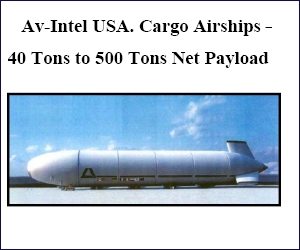 |
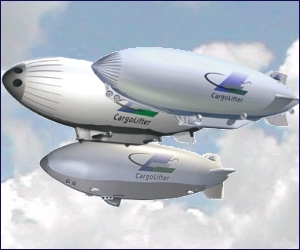 |
||||
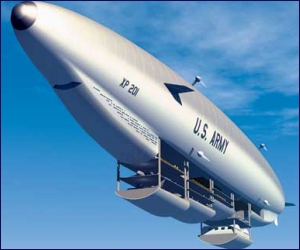 |
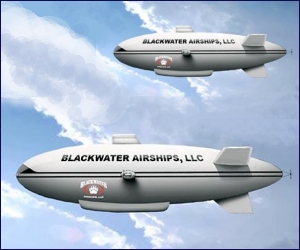 |
||||||
| "VariaLift Airships ARH-50" | ||||||||||||||||||||||||||||||||
| Varailift
is a unique heavy lift and transport solution. There
is nothing else quite like it in the World – with a carrying
capacity from One Tonne up to 1000 Tonnes and made out of aluminium,
this carrying solution has to be the vehicle of the future. This new name in aviation transport is one to look out for. Designed and developed by Alan Handley, design engineer and owner of the IPR and worldwide patents, Valialift will soon be developed in partnership with a world class manufacturer. This website is to tell you more about this great idea and help raise awareness, investment and capital funding to get this project, quite literally – off the ground.
http://www.varialift.com/5-9-.htm
|
||||||||||||||||||||||||||||||||
| "Lockheed-Martin P-791" | ||||||||||||||||||||||||||||||||
|
Oct 30 2007
Lockheed
to take wraps off top-secret air project?
A scientist from a top-secret Lockheed Martin hybrid airships research project that has never been spoken about in public will be in Winnipeg this week addressing the Airships to the Arctic conference. The advance buzz is that his presence may mean Lockheed will use the fourth annual Winnipeg conference -- which is becoming a must-attend event for airship aficionados from around the world -- as the venue to finally spill the beans on the secret airship project. Lockheed has confirmed it is developing such a craft that uses lighter-than-air gas for lift, but also has engines and wings to fly like an airplane. However, it will not say anything more. The airship would be capable of carrying heavy loads across significant distances. Like the wizards in the fictional world of the Harry Potter books who will not say the name of their nemesis out loud, company officials will not even utter the name of the project -- P-791. Virtually the only public knowledge of the project came about after Lockheed took it for a short test flight in February 2006 and it was observed and photographed by passers-by. But Melissa Dalton, a Lockheed spokeswoman at its research facility in Palmdale, Calif., northeast of Los Angeles, said the official's planned address for the conference will be about buoyant systems in general and not about the unmentionable P-791 in particular. has been replaced by another
Lockheed scientist. Step forward Dr. Robert (Bob) Boyd, the hybrid lift portfolio manager at Lockheed Martin Aeronautics, advanced development programs, or "SkunkWorks" in California, was originally scheduled to attend. But Dalton said Boyd was unable to make the trip at the last minute and Eric Hofstatter who works on the same team as Boyd will be here instead. Regardless of what Hofstatter is going to say, the fact that Lockheed Martin is venturing out of the research lab to even talk about the concept is seen as step forward for the fledgling airship business. Barry Prentice, the University of Manitoba transportation professor who has co-founded a non-profit organization called ISO Polar Airships to organize these conferences, is enthusiastic about advances being made in the development of the technology. Prentice and others believe heavy-lift airships can become an important solution to the challenges of development in northern Canada, where there are few all-season roads and a short winter road season that is getting shorter because of global warming. "We really think these airships can improve the lives of people in the North," Prentice said. "We're getting more people to come around and at least give it a hard look." In addition to the Lockheed Martin presenter, Hokan Colting, the
president of a Newmarket, Ont. company called 21st Century Airships,
will confirm his company's intentions to fly a brand new prototype
to Winnipeg next spring.
martin.cash@freepress.mb.ca
February 2006 Lockheed Martin's Secretly Built Airship Makes First Flight
Lockheed
Martin Advanced Development Projects is making perhaps the first
realistic tests of a hybrid airship--a concept that dates back many
decades but that is just now being tried at a significant scale. The
Skunk Works had secretly built the craft and hoped for a quiet first
flight at its Palmdale, Calif., facility, but a few passers-by
noticed the strange object in the sky. The Defense Dept. is showing interest in two categories of airships--those that can carry large cargo at low altitude, exemplified by the Defense Advanced Research Projects Agency (Darpa) Walrus program, and those that can operate in high-altitude low-wind conditions and remain on station for long periods of time. The configuration of the Skunks Works ship indicates it is the former--a hybrid heavy-load carrier. The Skunk Works made the first flight of its "P-791" testbed on Jan. 31 at its facility on the Palmdale Air Force Plant 42 airport. The manned flight was about a 5-min. circuit around the airport in the morning and appeared to be successful. The company did not announce or want to discuss the flight TO
GAIN MORE SPAN TO ACT LIKE a wing, the P-791 is three pressurized
lobes joined together. An observer of the first flight says it was
about the size of three Fuji blimps blended together. The Fuji blimp,
a Skyship 600 model, is 206 ft. long. That suggests the P-791 would
have a gross lift of roughly 3-5 tons. The
observer saw the craft performing very tight 360-deg. turns while
taxiing. It made a brief takeoff roll, climbed to a low altitude,
made a few banks--including a long sweeping turn--then came back and
landed. The landing approach had a nose-down body attitude that
levelled for the flare. The flight was very smooth, the observer
says. The craft was flown by P-791 Chief Test Pilot Eric P. Hansen. The speed of the testbed was estimated at about 20 kt. A full-scale version would be able to go much faster, over 100 kt. Lockheed Martin has long proposed a large transport airship, at one time called the Aerocraft, which was halted around 2000 (AW&ST Feb. 22, 1999, p. 26). That design was about 800 ft. long and was to carry 1-1.2 million lb. at 125 kt. The Skunk Works was one of two contractors to receive one-year, $3-million Darpa contracts in August 2005 to study Walrus. The second Walrus phase would be a three-year demonstration effort. more>>>
|
||||||||||||||||||||||||||||||||
| "DYNALIFTER" Ohio Airships | ||||||||||||||||||||||||||||||||
|
October 2006 It's a hybrid airship--part plane, part dirigible. Two Ohio inventors think production versions up to 990 feet long will launch a new era of aviation--one where low and slow is the way to go.
C'est un dirigeable hybride - avion & dirigeable. Deux inventeurs de l'Ohio pensent à la version production de 990 pieds. Le début d'une nouvelle ère de l'aviation - Un moyen de de déplacer lentement et près du sol. Octobre 2006
The future of aviation is wobbling. Looking like a giant albino queen ant, the 117-ft.-long Dynalifter airship trundles down a grass airstrip in eastern Ohio, its white, ovoid envelope bobbling with each clod and divot in the runway. Undersize wings poke out from the airship's midsection, ailerons fluttering, as co-inventor Brian Martin steers from a cannibalized ultralight cockpit slung under the canopy. He turns the ship around at the end of the runway, lines it up with the main axis of the strip and throttles up the twin 100-hp Rotax 583 engines. The great bobbing mass accelerates slowly until it is lumbering along at 30 mph. more>>>
|
||||||||||||||||||||||||||||||||
| "AEROSCRAFT" Aeros | ||||||||||||||||||||||||||||||||
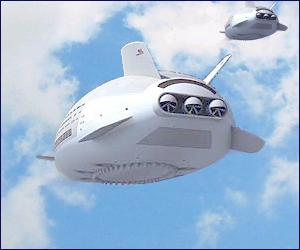 Summer 2006 The
Flying Luxury Hotel
This
is not a Blimp. It's a sort of flying Queen Mary 2 that could change
the way you think about air travel. It's the Aeroscraft, and when
it's completed, it will ferry pampered passengers across continents
and oceans as they stroll leisurely about the one-acre cabin or
relax in their well-appointed staterooms. Unlike
its dirigible ancestors, the Aeroscraft is not lighter than air. Its
14 million cubic feet of helium hoist only two thirds of the craft's
weight. The rigid and surprisingly aerodynamic body—driven by huge
rearward propellers—generates enough additional lift to keep the
behemoth and its 400-ton payload aloft while cruising. During
takeoff and landing, six turbofan jet engines push the ship up or
ease its descent. Aeroscraft http://www.aerosml.com/Aeroscraft%20Info.asp October 2003 Aeros Awarded a U.S. Department of Defense Contract for the High Altitude Airship Program The
U.S. Missile Defense Agency (MDA), recently awarded the Aeros
Company a contract for Phase I development of the High Altitude
Airship (HAA) Advanced Concept Technology Demonstration (ACTD)
Program. http://calbears.findarticles.com/p/articles/mi_pwwi/is_200304/ai_mark01053079/pg_1 |
||||||||||||||||||||||||||||||||
| "ATLAS" | ||||||||||||||||||||||||||||||||
 |
||||||||||||||||||||||||||||||||
| "Av-Intel USA. Cargo Airship" | ||||||||||||||||||||||||||||||||
 |
||||||||||||||||||||||||||||||||
| "Blackwater Airships. LLC" | ||||||||||||||||||||||||||||||||
|
Airship market balloons
Blackwater
USA's rendering of one of the new airships that it is developing.
Loaded with sensors and surveillance cameras, it will hover above a
battlefield and relay information to clients miles away, the company
says.After building a business defending high-ranking officials in
Iraq, Blackwater USA executives think the future may be hovering
above the battlefield. The
North Carolina company is developing an airship — think Goodyear
blimp — loaded with sensors and surveillance cameras that can
quickly relay information about the ground below to clients miles
away. "If
bad guys are setting up IEDs [improvised explosive devices] on the
side of the road, we can see real-time what's going on," said
Chris Taylor, Blackwater's vice president for strategic initiatives,
referring to improvised explosive devices, which have proved deadly
against U.S. troops in Iraq. The
company's first airship should be ready by year's end, he said,
though it has no customers lined up. Blackwater's move is only the most dramatic of the diversification plans private security companies are undertaking. >>>more
|
||||||||||||||||||||||||||||||||
| "CARGOLIFTER CL160" | ||||||||||||||||||||||||||||||||
|
CargoLifter-Crew will mit "Luftschiffen light" neu starten Von
Nikolaus Doll Berlin
- Puderzuckerfeiner Sand knirscht, Palmen rauschen und Samoanerinnen
wiegen sich zu Südseemelodien - für Berliner ist Klein-Polynesien
zum Greifen nah seit das "Tropical Island" im Örtchen
Brand Atoll-Atmosphäre in die weltweit größte freitragende Halle
gezaubert hat. Doch Carl-Heinrich von Gablenz, sonst kein
Tropenmuffel, hat "wenig Lust, jemals da reinzugehen".
Denn in dieser Halle sollte sein Traum, die Werft für Luftschiffe
der CargoLifter AG, wahr werden. Die Vision platzte, doch inzwischen
hat Gablenz nicht mehr diesen bitteren Beigeschmack, wenn er an das
Spaßbad denkt. Denn der ehemalige Vorstandschef der AG i. I. hat
erneut Mitstreiter, neue Gesellschaften gegründet, frisches Kapital
- und die alte Idee: den Bau von Luftschiffen. Luftfahrtexperten
schütteln den Kopf, und im Bundeswirtschaftsministerium heißt es
zur Mischung Luftschiffbau plus von Gablenz nur: "Chancenlos,
der Mann ist verbrannt." Doch von Gablenz, seit der Insolvenz
von CargoLifter im Aufsichtsrat der börsennotierten AG, hat vor
wenigen Tagen die CL CargoLifter GmbH & Co. KGaA gegründet
sowie die CLifter GmbH als Komplementärin - und bereits ein
Finanzpolster angelegt. "Innerhalb von drei Wochen sind rund
100 000 Euro reingekommen", sagte Mirko Hörmann, Geschäftsführer
von CLifter.
Ein
bescheidener Neuanfang. Als CargoLifter vor drei Jahren Pleite ging,
war das im Brandenburg der Ära Manfred Stolpe (SPD) der
Wirtschafts-Gau. Mehr als 300 Mio. Euro verbrannten, die 74 000
Aktionäre hielten über Nacht wertlose Papiere in den Händen. Die
CargoLifter-Aktie, zeitweilig mit rund 24 Euro notiert, dümpelte am
Freitag bei 0,091 Euro. >>>more
|
||||||||||||||||||||||||||||||||
| "FIRST" | ||||||||||||||||||||||||||||||||
 |
||||||||||||||||||||||||||||||||
| "SKYCAT Series" | ||||||||||||||||||||||||||||||||

World SkyCat Ltd
Hopes to restore Cardington as centre of airship production 19 October 2007
A
business hoping to restore Cardington as a centre of airship
production welcomed the go-ahead for a new 425 housing scheme cat
and the promised revamp of Number One Shed. Cardington,
and that's why I am delighted at the planning approval, as we
could use Number One Shed. We could use both sheds, but that
depends on Warner Bros."
http://www.bedfordtoday.co.uk/bed-news/Hopes-to-restore-Cardington-as.3396236.jp
Airship may link historic cities BBC-NEW 5 October 2007
A futuristic passenger airship could provide commuters with a new link between two historic cities. The Skycat helium balloon would float passengers from Cambridge to Oxford in an hour. The project is being developed at the Cardington sheds in Bedfordshire, the home of the UK's airship industry. But Advanced Technologies Group must find funding and get permission to use the airspace before the 21st Century airship gets off the ground. A Cambridge to Oxford aeroplane service has already failed because of a lack of commuters but the company believes there is a market for Skycat. High value jobs Gordon Taylor of Advanced Technologies Group said: "Our teams have been working for over 35 years flying traditional airships and nobody even sprained an ankle." "Its a very safe form of transportation." Corrine Garbett of Huntingdonshire District Council said: "In Huntingdonshire we have a number of employment sites including some redundant airbases which would lend themselves perfectly to the manufacturing of component parts for the aviation industry. http://news.bbc.co.uk/2/hi/uk_news/england/7030994.st
new SkyCat family of air vehicles. Capable of landing virtually anywhere on land or water without need of ground infrastructure and carrying payloads ranging from 20 to 1,000 tons, the SkyCat hybrid air vehicles offer a uniquely flexible and cost-effective solution to a broad spectrum of market and mission requirements. We are the launch customer for the first SkyCat-20, scheduled to make its maiden flight end-2008. We plan to take this historic new air vehicle on a 6-month grand World Tour
|
||||||||||||||||||||||||||||||||
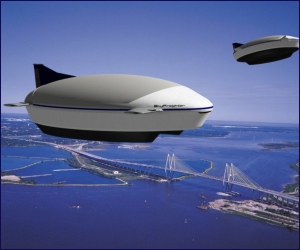 |
||||||||||||||||||||||||||||||||
| "WALRUS Near-Space" Blimps | ||||||||||||||||||||||||||||||||

"According to Inside Defense, a 90-day Air Force study has concluded that there would be "military utility" in putting blimps, balloons, and drones in near space—between 65,000 and 350,000 above sea level. Up there, they could serve as cheap substitutes for satellites, relaying communications and snooping on foes. They might be able to carry equipment, effectively becoming giant U-Hauls in the sky. And this could be done, at least in the balloons' case, without "significantly strain[ing] existing infrastructure or requir[ing] large amounts of equipment or personnel to operate the balloons," Inside Defense says." "Near space" is often considered too high for most aircraft and too low for satellites. Now FOX News adds additional background, and notes that the USAF is considering seeking up to $15 million on near-space operations and research in its 2007 budget, much of which will be focused on balloons and LTAs. One simple prototype, dubbed "Combat SkySat," was tested in the skies over Arizona in January through March with a series of 12 test launches. Kirtland Air Force Base NM is also involved in testing near-space craft. People mentioned in the FOX article include Lt. Col. Edward B. Tomme of the Air Force Space Command's Space Warfare Center; Lt. Col. Toby Volz of Air Force Space Command at Peterson Air Force Base, CO; and the the Air Force's Chief of Staff, Gen. John Jumper. The FOX News article goes on to detail the hazards and difficulties involved, incuding higher level of corrosive ozone and UV rays, the new infrastructure required for LTAs, and launch times. DID has noted the U.S. military's increased interest in baloons, blimps and related lighter-than-air craft (LTAs) as transports, communications relays, and sesnor platforms. In Support Rising for Near-Space Blimps, DefenseTech.org reports: "According to Inside Defense, a 90-day Air Force study has concluded that there would be "military utility" in putting blimps, balloons, and drones in near space—between 65,000 and 350,000 above sea level. Up there, they could serve as cheap substitutes for satellites, relaying communications and snooping on foes. They might be able to carry equipment, effectively becoming giant U-Hauls in the sky. And this could be done, at least in the balloons' case, without "significantly strain[ing] existing infrastructure or requir[ing] large amounts of equipment or personnel to operate the balloons," Inside Defense says." "Near space" is often considered too high for most aircraft and too low for satellites. Now FOX News adds additional background, and notes that the USAF is considering seeking up to $15 million on near-space operations and research in its 2007 budget, much of which will be focused on balloons and LTAs. One simple prototype, dubbed "Combat SkySat," was tested in the skies over Arizona in January through March with a series of 12 test launches. Kirtland Air Force Base NM is also involved in testing near-space craft. People mentioned in the FOX article include Lt. Col. Edward B. Tomme of the Air Force Space Command's Space Warfare Center; Lt. Col. Toby Volz of Air Force Space Command at Peterson Air Force Base, CO; and the the Air Force's Chief of Staff, Gen. John Jumper. The FOX News article goes on to detail the hazards and difficulties involved, incuding higher level of corrosive ozone and UV rays, the new infrastructure required for LTAs, and launch times Potential benefits include the creation of an additional resource available at the battlefield command level rather than the national asset level of spy satellites, freeing expensive satellites up for other tasks. Other benefits include improved pictures and easier eavesdropping on low-power communications duwe to greater proximity, relative cheapness when compared to advanced satellite programs and establishing cellular networks, and the ability to remain on station for very long periods of time. Finally, many of these craft are both outside the normal range of many aircraft and SAMs and resist deflating quickly when punctured, because the pressure inside is close to that of the surrounding air. The fact that "near space," unlike outer space, is considered part of a country's airspace and hence sovereign territory is considered both a positive and a negative consideration Potential benefits include the creation of an additional resource available at the battlefield command level rather than the national asset level of spy satellites, freeing expensive satellites up for other tasks. Other benefits include improved pictures and easier eavesdropping on low-power communications duwe to greater proximity, relative cheapness when compared to advanced satellite programs and establishing cellular networks, and the ability to remain on station for very long periods of time. Finally, many of these craft are both outside the normal range of many aircraft and SAMs and resist deflating quickly when punctured, because the pressure inside is close to that of the surrounding air. The fact that "near space," unlike outer space, is considered part of a country's airspace and hence sovereign territory is considered both a positive and a negative consideration. DID coverage of blimps, balloons, and lighter-than-air craft (LTAs)
|
||||||||||||||||||||||||||||||||

Airship DZ-N1 http://www.rosaerosystems.pbo.ru/english/projects.html
|
||||||||||||||||||||||||||||||||